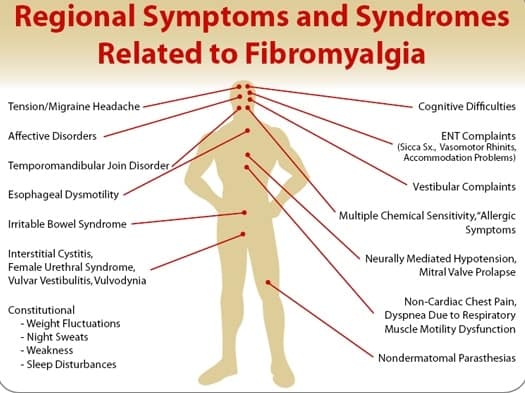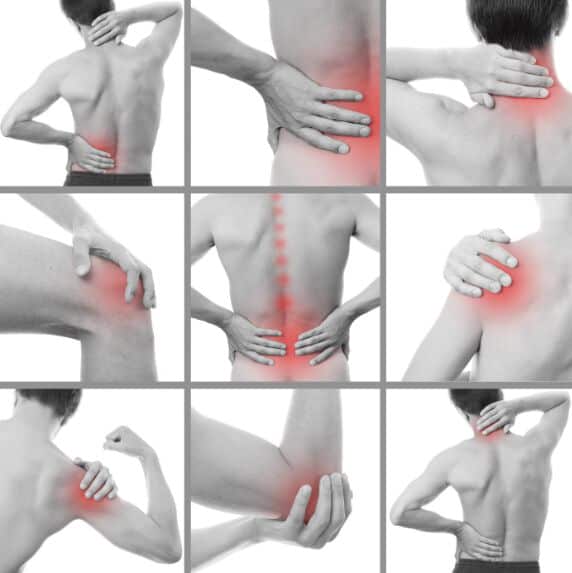Most days we feel in perfect health and ready to take on the world, but then there are few days where the most trivial actions seem impossible.
Now, these kinds of days are plentiful in a person suffering from any chronic pain so if you are having generalized pain and tenderness that just won’t go away you need to find out if you are suffering from fibromyalgia.
It includes the chronic painful condition of muscles, tendons, and joints along with stiffness and at times swelling of the affected part.
The symptoms of fibromyalgia can be the indication of many underlying health ailments from simple muscle strain to severe systemic conditions.
Upon further reading you will gather some valuable information on what is fibromyalgia and what are its causes, also given are some of the most efficient and natural home remedies to cure
Table of Contents
What Is Fibromyalgia Flare up
In simple terms, it is a condition in which person has long-term pain and tenderness with a stiffness of muscles, tendons, and joints. Painful impairment to movements and local tenderness calls attention to this condition.
Pain along with morning stiffness is the foremost symptom; the pain will be a deep muscular aching which can be sharp, shooting, throbbing, burning, radiating or have a sensation of pins and needles.
Along with pain, we notice stiffness and cramping sensation as if the muscles have been strained and pulled.
These pains tend to aggravate toward morning on waking up, at night and after exertion and as well as the occurrence of cold or damp rainy weather.
Home Remedies For Fibromyalgia Pain Flare up
Fibromyalgia being a long-term condition, it is not advisable to rely on just those painkillers to get relief. It can effectively be tackled by simple home remedies, but it must be remembered that its treatment will vary in accordance to the underlying cause.
For example, if there is a simple muscle strain then hot/cold compress will suffice but if pain results from infection or severe disease it must be tackled first.
1.Movement & Exercise

It seems to make no sense to move when your body is aching, but various researchers have shown that exercise can help improve the overall condition.
Not only does it regulate the blood circulation of the affected portion, but it also halts muscle wasting.
It is always advisable to start with mild stretching and daily tasks like taking stairs or sitting exercises and then going forward with strength and aerobic exercises(but only if your body permits) little steps at one time!!
2. Yoga & Meditation

The breathing technique involved in both induce a relaxation response, if practiced regularly they help fight many of the symptoms associated with fibromyalgia leading to healthier you. It also increases the flexibility of the muscles and prevents further muscular strains.
3. Acupressure & Acupuncture

Both of them involve an increase in brain activity which results in the reduction of pain. The tender point is very gently pressed or rubbed around in tiny circles. They also help in relaxing the muscles and reducing anxiety
4.Massage & Heat Therapy

It has been observed that massaging of the body helps in releasing certain chemicals that act as body’s natural painkillers.
It regulates the blood flow to the affected portion and relieves the pain and stiffness and enhances the range of motion.
More sophisticated form of massage therapy called MLDT manual lymph drainage therapy (take professional help) has also been known to be helpful
5.Intake Minerals
Fibromyalgia has often been associated with magnesium and vitamin-D deficiency.
Magnesium can be taken in the form of Epsom salt mixed with warm water helps in absorbing magnesium and relaxing the muscle.
On the other hand, half-hour exposure to early morning sun will suffice to your daily vitamin-D needs.
6.Omega-3 Fatty Acid
These are unsaturated fat that reduces inflammation and stiffness. Daily intake of flaxseeds, walnuts, fish oil and soybean oil or its supplements can be very helpful.
7. Coconut Water

Potassium and sodium are necessary to maintain the physiological level of electrolyte balance an alteration in their levels can trigger pain. Coconut water contains ample of these minerals and enhances the healing process.
8.Turmeric

The active ingredient present in Turmeric spice is curcumin, which is said to have anti-inflammatory properties. Daily intake of it in can be very helpful to reduce the swelling of the painful part.
9.Ginger

Ginger has anti-inflammatory and anti-oxidant properties hence a natural pain reliever. Its active ingredients have a warming action and ease the muscle spasm.
10.Herbs & Essential Oils

They can be used in the form of an infusion; the most effective herbs include ashwagandha, passion flower, nutmeg, chamomile, and cayenne. All of these herbs lessen anxiety and help in reducing the symptoms.
Commonly used oils include rosemary, eucalyptus, lavender, black oil, thyme. They have potent analgesics and anti-inflammatory properties and also improve circulation to the affected part. The oils can be used for massaging and also for aromatherapy.
11. Healthy Diet

Include green vegetables, lean protein, and foods containing antioxidants and vitamins. There are few infusions which can be tried for reduction of pain though their efficacy is not credible.
a. Apple water: Add three non peeled chopped apple four glasses of water, boil for 15 minutes and strain it. Drink the 3/4th cup of this preferably after meals.
b. Add one pinch of lavender flowers and 4 thin slices of lemon to 4 glasses of water and boil for 15 minutes and strain it. Drink this every 6 hours.
c. Grind 8-10 papaya seeds and boil it in one glass of water and drain it and drink it twice daily for a month.
d. Daily intake of freshly expressed radish juice or cranberry juice.
Tips For Management
Management is just as important as any form of treatment to relieve a condition. The main of which is to reduce suffering and increase function ability of the affected part.
i. Improve Sleeping Habits
disturbed sleeping patterns can cause as well as aggravate the condition. Get enough and refreshing sleep.
ii. Reduce Stress And Avoid Triggers
Both physical and mental stresses can a toll on your health, avoid overexposure to factors which can trigger the attack.
iii.Communicatin
Try and gather as much as information as you can on your present condition, talk it over with your doctor and another person with the similar situation.
iv.Interact
The more you interact, the more you will learn. It also includes psychological and behavioral therapies.
v. Positive Approch
Don’t give up on your condition and sit idly have a good healthy attitude and practice and preach healthy lifestyle activities
vi. Weight Management
Remember to maintain a healthy and steady weight, excessive increase in weight will have a direct and adverse relation to your weight-bearing joints.
vii. Aggravate
It is important to exclude all those food which can aggravate the pain such as sugar and gluten processed foods and also too much of alcohol and stimulants.
Symptoms Of Fibromyalgia Pain Flare up

There are many associated symptoms as well such as;
- Chronic fatigue
- Sleeplessness
- A headache and migraines
- Anxiety and restlessness
- Depression and oversensitiveness
- Fibro fog- difficulty in concentration and memory
Cause Of Fibromyalgia Flare-ups

So, you bent down to pick or lift up a heavy box, and the moment you stood straight, there was a sudden sharp shooting pain in your lower back.
In such cases if you have just a strained muscle then pain usually goes away in a couple of days or even weeks, now they are acute cases.
The acute cases and repetitive stress injuries result in a chronic condition causing fibromyalgia.
How Does Our Brain Perceive Fibromyalgia Pain
Chronic pains (which have lasted for three months or more) cause certain imbalances in the nervous system which result in impaired pain reception causing the nerve endings to become hypersensitive to pain.
This amplifies the pain sensation, and even slight touch can be painful. This hormonal imbalance can be genetic that is why we see fibromyalgia tends to be familiar.
Some Other Causes
Other causes/triggers include:
- Accidents and injuries viral infection or prolonged illness.
- Physically and mentally traumatic and stressful events.
- Viral infection or prolonged illness.
- It can be the early manifestation of malignant diseases.
- Reduction in electrolyte imbalance ass seen in cases of vomiting and diarrhea.
- Metabolic disorders which impair the relation of glycogen and glucose.
- Chronic Fatigue Syndrome
- Continued poor posture
How Is Fibromyalgia Pain Diagnosed?
This condition cannot be diagnosed by any X-RAY or blood tests hence usually the physicians rely on the narration given by the patient about the intensity of his complaint. There are certain painful spots called “tender points” which are found in the soft tissue of:

- Back of neck
- Shoulders
- Chest
- Lower back
- Hips
- Shins
- Elbow
- Knees
There are 18 different tender spots, and if out of those 11 points are tender then a near about diagnosis can be made regarding this condition.
Review
Fibromyalgia until now has been a condition where the patient eventually learns to live with pain and tolerate and palliate it. You can keep the pain at bay with just a little effort of using the given home remedies and maintain a healthy lifestyle and diet and with a little patience, the tormenting days of pain will become a thing of past.
Also Read:





